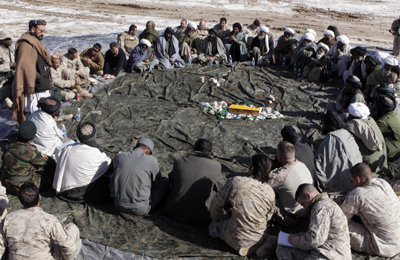The Peace Process Formula: Phase 3
THE PEACE PROCESS FORMULA: PHASE 3 (ISSUE 74)
By Diane Gold
The Peace Process Formula is an evolving series of steps that gently create dialogue and resolution of a peace conflict based on our sameness and not our differences. This is Phase 3.
The Peace Process Formula: A Step By Step Guide, was published on December 3, 2012. The process involved a moderator’s talking to 1 person who had experienced geopolitical conflict and really listening to what that person had to say.
The Peace Process Formula: Phase 2, from December 10, 2012, outlined role playing action steps involving a moderator and 2 people from the same conflict role playing leadership roles. They each would have individually been through Phase 1 of the process, where each talked about her (his) experience.
After seeing the documentary, The Two-Sided Story, a peace process story about bringing together bereaved family members from both sides of an age-old conflict; I am convinced, more than ever, that The Peace Process becomes solid when people talk to each other and get to see their humanity in each other. When I watched this movie, it was as if I were seeing this process in a film that I had directed.
The poster for the process at The Parents Circle-Families Forum says,
“It Won’t Stop Until We Talk.”
This seems simple enough, but, as we know, it is not.
Nelson Mandela said,
“…courageous people do not fear forgiving, for the sake of peace.”
This simple quote points to the importance of stepping off our path of revenge for the greater good.

The fact that my family was blown up by your family is a big deterrent in the peace process. My blowing up your family to stop you from future action is another action that stops peace. The heart does not forget, even when we show forgiveness on the outside. So, what are we to do?
What if we tell another bereaved person how we feel? It will be extremely difficult, at first, because we do not want to be in the same room as our opposite bereaved tribe member. If we make the choice to do it, we may see that our feeling of pain and loss is very much the same as that of our fellow bereaved on the other side and that continuing violence upon violence to revenge violence upon violence perpetuates violence upon violence and doesn’t help our loved ones or our children. The big picture shows that both sides of the conflict, whichever one it is, have suffered tremendous losses. History shows that killing begets killing and more sorrow; listening begets understanding and the possibility of peaceful co-existence.
To outline the steps in The Two-Sided Story, participants go through a process:
 1) Bereaved people from opposing sides of a conflict share their story, 1 at a time, with the whole group. (Image depicts a generic group.)
1) Bereaved people from opposing sides of a conflict share their story, 1 at a time, with the whole group. (Image depicts a generic group.)
2) They continue listening by separating into pairs of opposite tribes and share their story with the opposite tribe member who is sitting next to them.
3) They role play by getting back into the group and speaking as if they are their counterpart, describing what the counterpart has said about life and situation.
4) They become empathetic by talking about how they feel as if they are their counterpart.
5) They notice they are beginning to understanding their partner is not a monster, even if just a little.
This 5-step process, shown in Two-Sided Story, produced by Yoav Leshem, directed by Tor Ben Mayor, created through The Parent’s Circle-Families Forum, resulted in emotional healing, human understanding, personal friendships and a wonderful peace model for others to follow that has begun to be successful.
 CATHARSIS
CATHARSIS
Since The Peace Process Formula is a fluid, open process; we are open to evolve the more we understand and experience. With this said, Phase 3 of the process focuses on sharing the individual perspective. 2 people from opposing tribes will get together with a moderator. To follow is the rationale.
__________________________________________________________________________
WORLD TAI CHI DAY IS A WEEK FROM SATURDAY
World Tai Chi and Chi Kung Day is coming up on April 27, Saturday, at 10:00 am. There are events all over the world. It’s free and fun, for beginners or experienced people. If you are in Boca Raton, I’m coordinating the event at Sanborn Square, my 14th year in Boca. I would be honored to have you attend. Spread the word! If you’re not going to be local, I will look for an event near your location if you contact us.
__________________________________________________________________________
RATIONALE
We know that “what’s in it for me” is always an easy way to get people to listen. If we could bring back the life of a loved one lost in war, we would immediately pay attention. Unfortunately, we cannot. If we could erase the hatred our neighbor has for us, we would.
What we can do is save ourselves from resentment, vengeful thoughts, anger and more violence. The steps to do this are not so flashy or fancy; but, when we receive some personal benefit from an action step, we are more likely to get involved rather than if we hear an abstract rationale whose benefit will help the world.
The pow-wow of 3, the moderator and 2 individuals from opposing tribes shall be planned. If 2 opposite tribe members are not present, the moderator can take on the role of the member of the opposite tribe who is not actually present.
ACTION STEPS
1) The moderator serves tea and talks about the tea ritual for 5 minutes.
2) As in Phase 1, the moderator will allow 5-15 minutes for each person to speak about her/his experience. The difference here is that each person would have to give full attention to someone from the opposite side’s story.
REITERATE THE RULES
No verbal or body language blame, no cursing or other violent language, no abusive physical contact.
3) The moderator asks each participant to speak about her (his) story.
4) After both people have spoken, the moderator asks:
a) How is your pain different from her (his) pain?
b) Did talking help you get closer to understanding the person next to you?
5) Tea is served.
6) Moderator thanks both participants for their time.
CONCLUSION
The people who agree to participate in this process are, at least, curious about some sort of peaceful settlement. They may still hold blame for the hardships they have endured, but they have some curiosity about what a peace process might look like.
In sharing our stories, we face our pain; we become less alone with the burden of pain and suffering; the perceptions we have about the wrongs that have happened come out in the open. Sometimes, this allows us to have a cathartic experience that heals us; may find others who feel the same torment, or we may find others who have a completely different burden; we may be helped, or we may help.
Here is a quote from Robi, a member of the Bereaved Families Forum in the above-cited movie, whose peace-loving son, David, was killed by a sniper. Robi is a devoted mother who believes that revenge does not belong in the peace process. It sums up a great possibility,

“I believe removing the stigma from each side and getting to know the person on the other side allows for a removal of fear, and a way to understand that a long-term reconciliation process is possible.”
FEEDBACK
Please leave a comment and LIKE.
DIANE GOLD, AUTHOR
Diane Gold, Founder of Warriors of Weight, Turning Habits Into Health, is a mentor in tai chi, kung fu and meditation, a music, fitness and stress expert, dedicated mom, studying plant-based nutrition.
She has seen the way people learn tolerance through communication. This is the same process used in academic debates, brainstorming groups and personal growth sessions. She says,
“A systematic approach can create new trust, once we establish the best way to send a gentle breeze to our opposite tribe. It’s all about taking 1 step.
“It’s extremely difficult for most people to let go of their ideas. Most of us “know” we are right and are not interested in changing. In some cultures, heads of families abuse their family group should the family question the head’s authority. This type of rigid behavior often maintains the wall of war.
“I see progress with the peace process. And the latest generations are multicultural. They far surpass the “flower child” generation whose slogan was “make love, not war” because of the global network in which they have grown up.
“The peace issue” is engrained in Millenials, or so it seems. That’s why we live in a great climate for The Peace Process Formula to spread, one group at a time until it catches on worldwide.”







